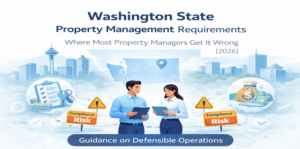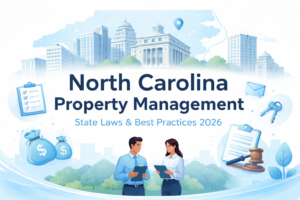
When we talk about real estate investment, it can be both challenging and rewarding. They present many opportunities, risks, and potential gains. Getting into this market and sustaining it longer can be difficult.
But thanks to technology, real estate investors and property managers are finding new solutions to maintain it. One is the use of the property metrics. They use property metrics – numbers that reveal a property’s investment potential – to evaluate risk.
Plus, the forecasting of future trends and markets becomes accurate once you are good at understanding the data at hand. We wrote this article to help you learn about property metrics. We also have listed some essential metrics for property owners to know.
Understanding Key Rental Property Metrics
Starting with a basic understanding of a metric is a way to measure or evaluate something. In different contexts, metrics can measure other things. For example, in business, metrics might measure sales, profits, or customer satisfaction.
When we move to the property management business, the information and data available today are rapidly increasing. With this data, various metrics come in handy that a property manager, owner, and investor must be aware of.

No matter how much experience an investor has in the market, these metrics are super important for understanding what’s going on with real estate investments. Let’s talk about some of the essential metrics below:
Cash-on-Cash Return (CoC)
The cash-on-cash Return (CoC) is a simple yet effective way to measure real estate performance. CoC metric calculates the annual return on an investment as a percentage of the cash invested, excluding financing.
It’s a way for investors to see what they’re really getting back from a property based on the cash they put in. It makes judging an investment’s profitability super clear and simple without getting tangled up in all the complicated financing stuff.
Investors looking for a clear, quick peek into their investments’ financial returns will find the Cash-on-Cash Return super helpful. It’s like comparing what you initially put in with what you’re actually getting back from the property. This gives you a straightforward view of how well your investment is doing over time.
Cap Rate
The Cap Rate, or the Capitalization Rate, is an essential metric in real estate that helps investors estimate the potential return on investment for properties. It’s calculated by dividing the property’s net operating income (NOI), the total income generated minus operating expenses, by its current market value or initial purchase price.
Investors rely on the Cap Rate because it quantifies a property’s profitability and financial performance. They can use it to compare properties and make informed investment decisions aligning with their financial goals and risk tolerance.
Gross Rent Multiplier (GRM)
The Gross Rent Multiplier (GRM) is helpful for real estate investors. It helps them understand how long it would take to recover their initial investment through rental earnings alone. The calculation is straightforward: investors divide the property’s purchase price by its gross annual rental income.
The GRM is a quick and easy way to compare investment properties at a glance. However, it does not include operating expenses. For a more complete picture, investors should use other financial metrics and do their due diligence before deciding.
Net Operating Income (NOI)
Next, we have Net Operating Income (NOI), another key financial measure used in real estate analysis to evaluate a property’s financial health.
It is calculated by subtracting operational expenses such as maintenance, management fees, utilities, and insurance from a property’s gross income, which includes all revenue generated from the property, including rents and other income sources.
NOI is an essential indicator of a property’s income-generating capacity for investors, property managers, and stakeholders. It provides a clear picture of the property’s profitability before financing and tax expenses, allowing for a direct comparison of operational efficiency between properties of any size or type.

Property Metrics for Investment Decisions
Now that we’ve got these metrics on the table, it’s super important to understand how each one helps us make smart investment choices. Keeping an eye on these numbers over time is key to understanding how well a property is doing.
If you see the Cash-on-Cash Return or Capitalization Rate going up, it could mean you’re onto a more profitable investment. But, if the Gross Rent Multiplier is on the decline, it might mean the property’s value is increasing faster than what you’re making from rent, and it’s time to think things over.
Also, different properties will show you different numbers, which is great for spotting the ones with the best money-making potential. Like, if a property has a higher Cap Rate than others you’re looking at, that’s a good sign it could bring in more cash in the long haul.
Tools and Resources for Property Metrics Analysis
Using these metrics effectively, investors can access various tools and resources to compare properties. There are several online platforms that provide what real estate investors need.
They have all these calculators and tools made just to check out property investments. These tools make all that number crunching way easier, giving investors quick insights into how profitable different properties could be.
Also, if you’ve got an extensive portfolio using real estate investment software, it can change the game. These powerful tools do all the heavy math, deep-dive into scenarios, and smoothly pull data from different places.

One such tool is Propertese, a cloud-based ERP system that has been helping property businesses achieve efficiency, growth, and sustainability. With these tools, you get a detailed look at your real estate investments, helping you make smart, strategic choices for the best returns on your portfolio.
Conclusion
Real estate investors and owners can make significant decisions with property metrics. Even better, with accurate data, you can make intelligent decisions and help yourself reduce risk and maximize profits.
We cover some of the essential property metrics in this blog, but there are many more metrics that you can find on the internet. You should explore them too. If you want to save time, investing in online tools and ERP systems like Propertese is worthwhile.
Table of Contents
Stay Updated
Subscribe to get the latest news, industry trends, blog posts, and updates...




